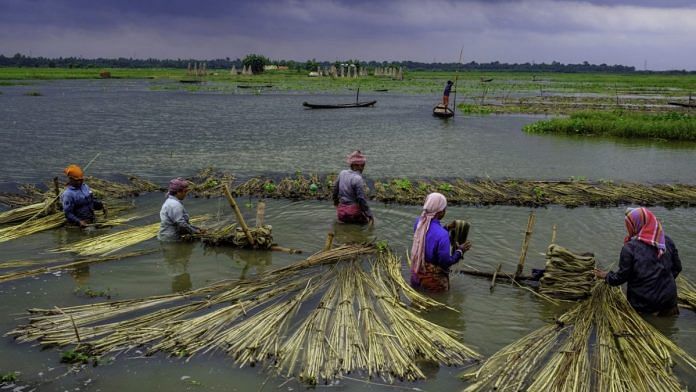Monsoon is central to the Indian economy. In the four monsoon months of June to September, the country receives close to 75 per cent of its annual rainfall. Anything that disrupts monsoons, affects the economy.
Every year, before the onset of monsoon, the India Meteorological Department (IMD) releases two forecasts. The first forecast, which is usually more preliminary, comes around mid-April and the second, a more detailed assessment, is released around late May. On Thursday, IMD released its first forecast for monsoon 2022. According to it, the monsoon rains are likely to be ‘normal’ – that is, it will likely be about 99 per cent of the long period average (LPA) rain value. Rains are categorised as normal if they are 96 to 104 per cent of the LPA. Skymet, a private weather forecaster, predicted a ‘normal’ monsoon too.
But the fine print tells a different story. There is a possibility of dry spells and intense rains and a volatile monsoon in these months.
The science of monsoon prediction is still evolving and despite the best scientific efforts and long experience of IMD in working with global and Indian models, it is quite possible that the forecast may not turn out to be entirely correct. Nevertheless, four interesting points emerge from this forecast.
Also read: IMD predicts normal rainfall in monsoon this year
Lower rains in latter monsoon months?
Owing to the prediction of Indian Ocean Dipole (IOD) becoming negative (negative IOD is associated with lower Indian monsoon rains) in the second half of the monsoon period, it appears that both the forecasters are hinting at lower-than-normal rains in late July and the following months of August and September. The spatial distribution of rain is critical for crops, and deficit rains in late July and August will impact the growth of the transplanted paddy that needs regular water.
Lowered LPA value
In a separate press release, also released Thursday, IMD has communicated that it has reduced the monsoon’s LPA value. LPA is estimated as the average value of monsoon rains received by the country in 50 years. The LPA value used till 2021 was 880.6 mm, which was the average rainfall received by India in monsoon months between 1961 and 2010. Now, IMD revised the LPA value to 868.6 mm (average for 1971 to 2020). This reduction of about 12 mm of LPA rains, indicates two things:
(i) Indian monsoon rains have been shrinking over time
(ii) Measured against the previous LPA, prediction for monsoon 2022 would have looked grimmer
Also read: India faces a severe water crisis & Modi govt can’t tackle it alone. Here’s what we can do
Possible skewed geographic spread
According to IMD, parts of north-eastern, and north-western states are likely to face below-normal monsoon rains. Even states in the southern peninsula, barring states in central India and north, are highly likely to face scanty rains, at least in the two critical monsoon months of July and August. Usually, between the four monsoon months, the proportion of rain received in each month is about 18 per cent in June, 33 per cent in July, 29 per cent in August and 20 per cent in September.
Possibility of dry spells and intense rains
As per Skymet, the 2022 monsoon is likely to be volatile with episodes of intense and sudden rains, ‘interspersed by abnormally long dry spells.’ This is much in line with the predictions from IPCC’s 6th Assessment report about Indian monsoons that said the country will face increased frequency and duration of dry spells, and intensified monsoon extremes. Due to similar extremes, monsoon rain in 2021 got a unique place ‘in the historical records of (Indian monsoons)’, as per IMD. Such dry spells affect crop yields in the field.
If this forecast were correct, then combined with the impact of the unusually high temperatures in March 2022 and the prediction of a more-than-usually hot summer for many areas in 2022, yields of several agricultural crops will likely be negatively impacted. There is already news about shriveled wheat and pest-attacked onions.
Also read: 2021 monsoon shows impact of climate change. Here’s what it’s doing to kharif crops
Food prices to stay high
Many states now have the experience of dealing with shortfall in rains by switching over to more resilient crops and adopting methods of rain water conservation.
Nevertheless, the current year does not appear to offer much chances of food getting cheaper. It could be because of expensive crude and rising domestic fuel costs, global supply disruptions due to the Russian war on Ukraine, expanding export opportunities of Indian food grains and now the chances of the fourth wave of Covid. The food prices in the country may well stay higher this year.
On the monsoon front, more can follow in May when the IMD releases a granular prediction.
Saini is an independent researcher and Hussain is Senior Visiting Fellow, ICRIER. Views are personal.



